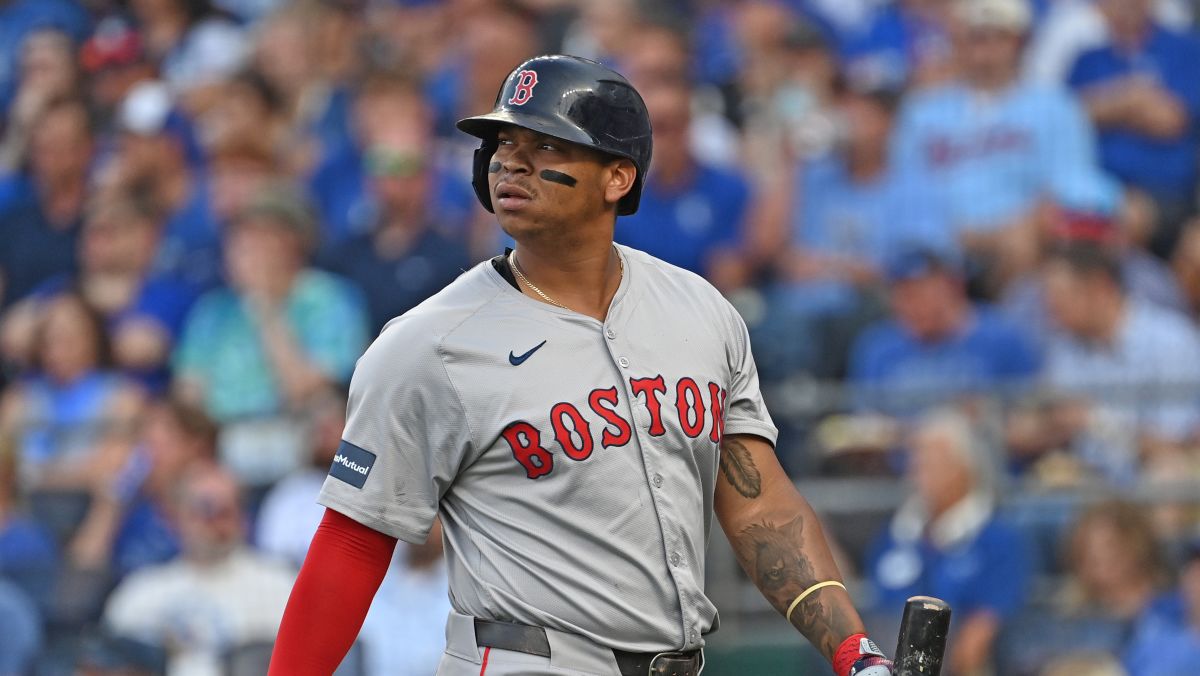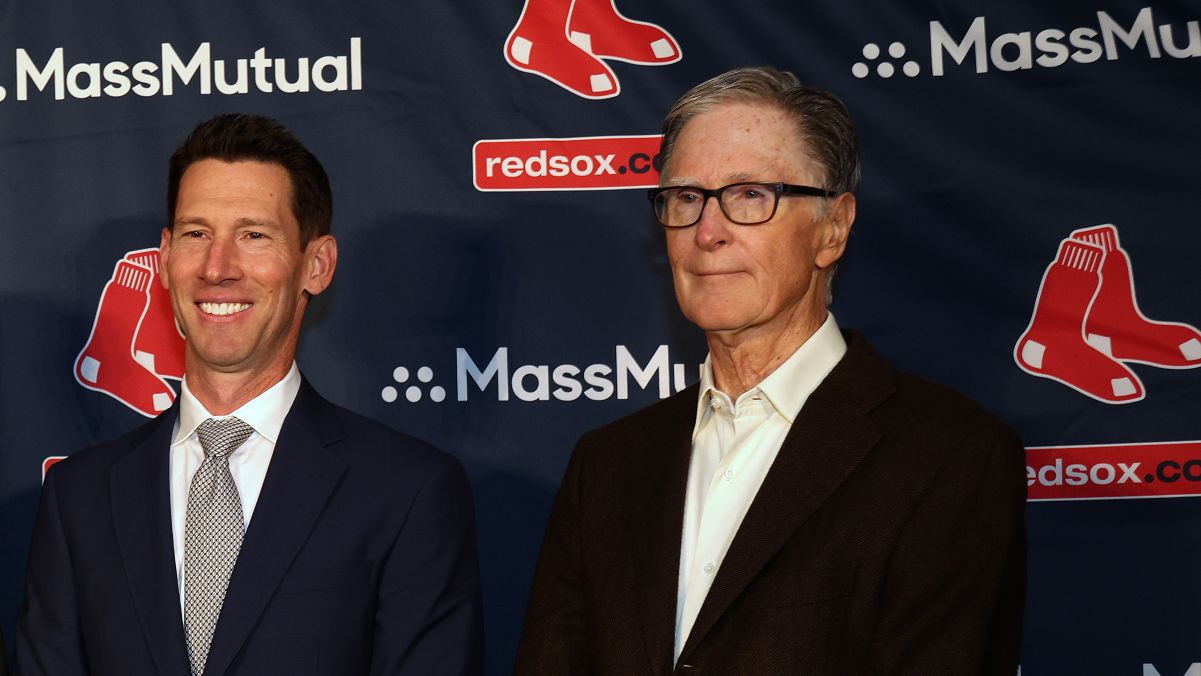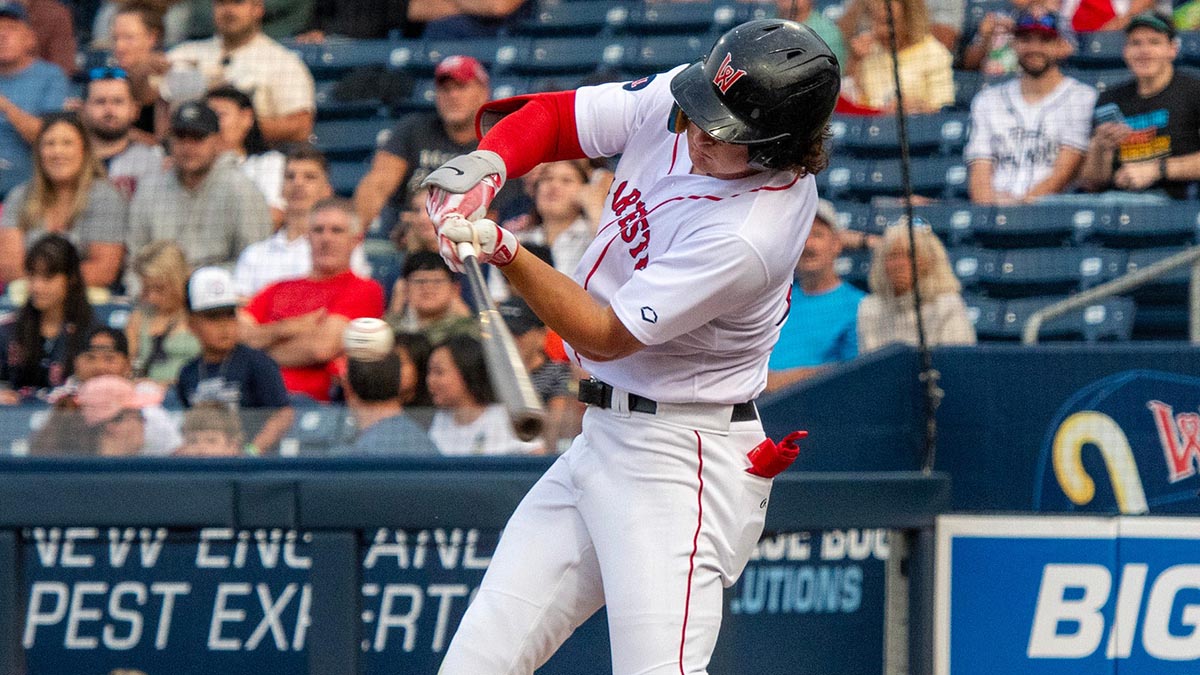Baseball's new-school GMs are cut from the same cloth, kinda literally. Their standard outfits -- chinos or dark jeans, team-issued pullover or generic half-zip, dressy sneakers, sunglasses perched atop their heads -- scream "I AM IN CHARGE AND PROFESSIONAL BUT I AM ALSO A FAN AND CASUAL. WHAT IS UP, MY HOMIES?"
If you can't differentiate Jeff Greenberg from Mike Elias from David Stearns, that's OK. There's more where they came from, because the Ivy League pumps out efficiency-obsessed sabermetricians as vigorously as rapacious McKinsey consultants.
These GMs or High Potentates of Baseball Operations or Presidents of Whatever don't just dress the same, they march in lockstep, too. It's how so many of them can annually offer the underwhelming Andrew Heaney the same contract, or why half the league has abandoned the traditional thumping DH in favor of "versatility," or what we once called "a utility infielder." (The Rangers have used 17 different DHs this year alone!)
Stay in the game with the latest updates on your beloved Boston sports teams! Sign up here for our All Access Daily newsletter.
These execs fetishize data, care only about numbers "under the hood," and have poured more money into R&D than your average cartel.
But there's one man who bucks the trends, sartorial and otherwise, and it's safe to say Red Sox fans didn't know how much they were going to miss him when the team said sayonara in September of 2019.
MORE RED SOX COVERAGE
Phillies president of baseball operations Dave Dombrowski is a throwback. He travels with the team so he can have a constant feel for the pulse of the clubhouse, generally wears a jacket and tie, and is as likely to file information on index cards as spreadsheets.
His old-school approach of identifying needs and then filling them with money and/or prospects but without regret resulted in the most dominating Red Sox team ever.
The champagne on that 2018 World Series championship hadn't even dried, however, before owner John Henry decided he wanted a piece of that small-market action. Why spend aggressively when, with some smarts, you could pay half as much for a roster that might even occasionally sniff the playoffs?
So out went Dombrowski and in came Chaim Bloom. And while the well-meaning chief baseball officer certainly pumped the farm system full of A-1 position prospects, he neglected the big league club under the naïve belief that ownership would tolerate multiple last-place finishes for the hypothetical promise of a better day.
They stood by their man until they didn't, and now it's Craig Breslow's turn. The Red Sox are better, but they're still probably going to miss the playoffs for the fifth time in six years, partly because they neglected the roster this winter.
Meanwhile, Dombrowski's Phillies have rocketed to the most wins in the National League and first place in the brutal National League East. They're on pace for 95 wins and a third straight playoff berth, their winning percentages increasing over each of Dombrowski's five seasons.
The Phillies aren't merely a force, they're a phenomenon. Whereas Boston has devoted much of its Red Sox coverage since he left to whether anyone cares about baseball anymore, Dombrowski has overseen a Philly renaissance. Attendance at Citizens Bank Park has more than doubled since 2021 and will top 3 million for the second straight year, creating one of baseball's most significant homefield advantages.
Phillies games resemble rock concerts, the crowds raucous and intense, the atmosphere a mix of birthday bash and fight club. We used to know that feeling, but now celebrate that Fenway is mostly filled with Red Sox fans again and not awash in visiting colors.
If that's progress, it's depressing.
Dombrowski has given Philly a team to cheer, built around an enviable mix of free-agent smashes, homegrown talent, and complementary parts. He recognizes that fans form bonds with stars, whereas the Red Sox lamely insist the paying customers just want a winner. Perhaps one begets the other and they actually prefer both?
While it's easy to say the Red Sox lost market share because of three last-place finishes in four years, it's also true that fans haven't yet forgiven the illogical trade of former MVP Mookie Betts, nor the follow-up lowballing of franchise shortstop Xander Bogaerts. The Red Sox have spent the last five years stripping the roster of recognizable names.
Meanwhile, Dombrowski targets talent without any mention of the godforsaken margins prized by the modern exec. He inherited franchise cornerstone Bryce Harper, a player Red Sox ownership almost certainly wouldn't have paid, as well as All-Star catcher J.T. Realmuto. He augmented them in free agency with superstar shortstop Trea Turner, ace Zack Wheeler, and old fiend Kyle Schwarber.
The knock on Dombrowski in Boston was that he sold out the farm, but he left behind more talent than we credited him for, from All-Stars Jarren Duran and Tanner Houck, to exciting rookie Ceddanne Rafaela, to slugging first baseman Triston Casas and promising right-hander Brayan Bello.
His Phillies are winning with homegrown players, too, including All-Stars Aaron Nola, Alec Bohm, and Ranger Saurez. All three predated Dombrowski's arrival, but he extended Nola, stuck by Bohm, and developed Suarez. Meanwhile, he also added solid outfielder Brandon Marsh in a win-win trade with the Angels for catcher Logan O'Hoppe, and recognized All-Star potential in former Red Sox reliever Matt Strahm.
In the process, he has done what Henry used to care about, which is put his team at the center of the baseball universe.
It's enough to make you wonder what the Red Sox would look like if Dombrowski had stayed in power. Betts would still be here. Wheeler might be the staff ace. Whatever prospects filled the pipeline, they'd be augmenting the roster, not tasked with saving it.
Actually, it's not hard to envision this alternate reality at all. Just look at the Phillies, and imagine cheering for that every night while the nattily attired Dombrowski oversees it all from his box high above home plate.



